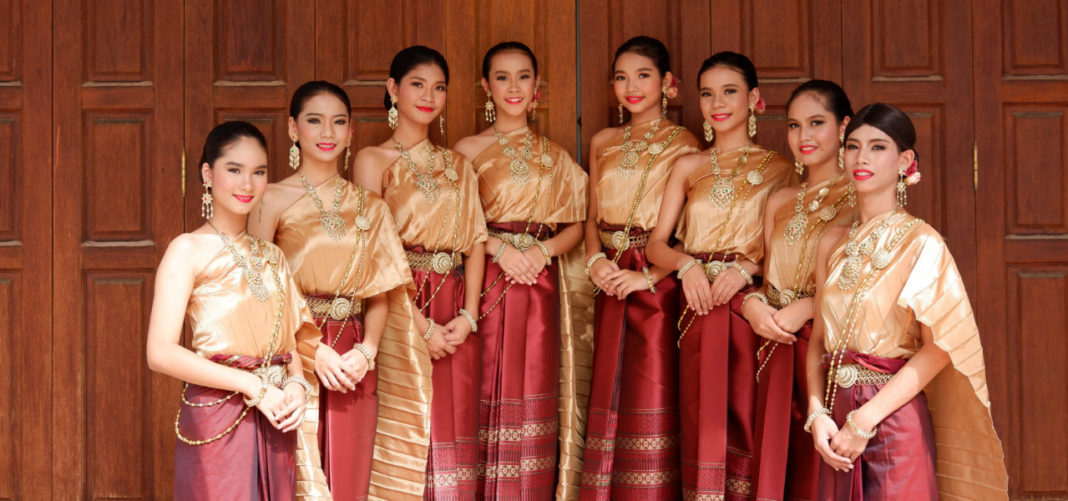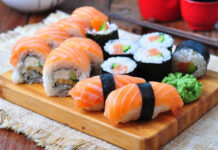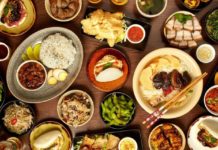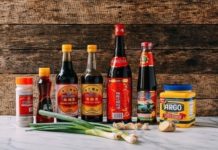Thai fashion is a diverse and unique style that incorporates traditional elements of Thai culture with modern fashion trends. Thai fashion is known for its use of vibrant colors, intricate patterns, and ornate details that reflect the country’s rich history and cultural heritage.
Some of the key features of Thai fashion include:
- Use of traditional Thai textiles such as silk, cotton, and hemp.
- Traditional Thai textiles such as silk, cotton, and hemp have been used in Thai fashion for centuries. Silk is one of the most popular textiles used in Thai fashion, and it is highly prized for its softness, luster, and durability. Thai silk is often hand-woven on traditional looms, and it comes in a wide range of colors and patterns.
- Cotton is another popular textile used in Thai fashion, and it is often used for more casual clothing. Thai cotton is typically hand-woven and comes in a range of colors and patterns, from simple stripes to intricate designs.
- Hemp is a less common textile used in Thai fashion, but it has been used for centuries in rural areas of Thailand. Hemp fabric is known for its strength and durability, and it is often used to make traditional clothing items such as the pha sin, a long, narrow piece of fabric worn around the waist.
- In addition to these traditional textiles, Thai fashion designers also incorporate other materials such as lace, chiffon, and satin into their designs, creating a blend of traditional and modern elements in their collections.
- Incorporation of intricate embroidery, beading, and other embellishments.
- Intricate embroidery, beading, and other embellishments are commonly used in Thai fashion to add texture, color, and detail to clothing and accessories. Thai embroidery is often done by hand and can feature traditional patterns such as flowers, animals, and geometric shapes. The embroidery is often done in vibrant colors and can be found on a wide range of clothing items such as blouses, dresses, and jackets.
- Beadwork is another popular embellishment used in Thai fashion, and it is often incorporated into traditional clothing items such as sarongs and the pha nung. Beads can be sewn onto the fabric in intricate patterns or used to create tassels and other decorative elements.
- Other embellishments commonly found in Thai fashion include sequins, crystals, and metal studs, which can be used to add sparkle and shine to clothing and accessories. These embellishments are often used on formalwear such as evening gowns and wedding dresses.
- Overall, the use of intricate embroidery, beading, and other embellishments is a key element of Thai fashion, adding a touch of elegance and sophistication to traditional clothing items and modern designs alike.
- The use of bold and vibrant colors, such as bright oranges, pinks, and greens.
- Bold and vibrant colors are a hallmark of Thai fashion, and they are often used to create eye-catching and striking designs. Bright oranges, pinks, and greens are some of the most popular colors used in Thai fashion, but other bold colors such as deep blues, purples, and reds are also commonly used.
- These bright colors are often used in combination with traditional Thai patterns and motifs, creating a colorful and dynamic visual effect. For example, traditional Thai fabrics such as silk and cotton may feature intricate patterns in multiple colors, and these patterns can be used to create clothing items such as dresses, blouses, and skirts.
- In addition to traditional patterns, modern Thai fashion designers also incorporate bold colors into their designs to create a contemporary look that still pays homage to the country’s rich cultural heritage. Whether used in traditional clothing items or modern designs, bold and vibrant colors are a key element of Thai fashion and are sure to catch the eye of anyone who sees them.
- The inclusion of traditional Thai clothing items, such as sarongs, the pha sin (a long, narrow piece of fabric worn around the waist), and the pha nung (a skirt-like garment).
- Traditional Thai clothing items such as sarongs, the pha sin, and the pha nung are still widely worn in Thailand today, and they are an important part of Thai fashion.
- Sarongs are a versatile piece of clothing that can be worn by both men and women. They are typically made of lightweight fabric and are worn wrapped around the waist, often with a traditional Thai shirt or blouse.
- The pha sin is a long, narrow piece of fabric that is wrapped around the waist and tucked in at the side. It is often worn by women, and it can be made from a variety of materials such as silk, cotton, or hemp. The pha sin is often embellished with intricate embroidery or beadwork, adding a touch of elegance and sophistication to this traditional garment.
- The pha nung is a skirt-like garment that is also typically worn by women. It is made from a rectangular piece of fabric that is wrapped around the waist and gathered at the side. Like the pha sin, the pha nung can be made from a variety of materials and may be decorated with embroidery, beadwork, or other embellishments.
- While these traditional clothing items are still commonly worn in Thailand, modern Thai fashion designers have also incorporated them into their designs, creating contemporary looks that blend traditional and modern elements. Whether worn as traditional clothing or as part of a modern outfit, these traditional Thai clothing items are an important part of Thai fashion and culture.
- Traditional Thai clothing items such as sarongs, the pha sin, and the pha nung are still widely worn in Thailand today, and they are an important part of Thai fashion.
- Sarongs are a versatile piece of clothing that can be worn by both men and women. They are typically made of lightweight fabric and are worn wrapped around the waist, often with a traditional Thai shirt or blouse.
- The pha sin is a long, narrow piece of fabric that is wrapped around the waist and tucked in at the side. It is often worn by women, and it can be made from a variety of materials such as silk, cotton, or hemp. The pha sin is often embellished with intricate embroidery or beadwork, adding a touch of elegance and sophistication to this traditional garment.
- The pha nung is a skirt-like garment that is also typically worn by women. It is made from a rectangular piece of fabric that is wrapped around the waist and gathered at the side. Like the pha sin, the pha nung can be made from a variety of materials and may be decorated with embroidery, beadwork, or other embellishments.
- While these traditional clothing items are still commonly worn in Thailand, modern Thai fashion designers have also incorporated them into their designs, creating contemporary looks that blend traditional and modern elements. Whether worn as traditional clothing or as part of a modern outfit, these traditional Thai clothing items are an important part of Thai fashion and culture.
- Modern designs that blend traditional Thai elements with contemporary fashion trends.
- Thai fashion designers are known for their ability to blend traditional Thai elements with contemporary fashion trends, creating modern designs that are both unique and culturally rich. Some of the ways in which they do this include:
- Using traditional Thai fabrics and patterns in modern designs: Thai designers often incorporate traditional fabrics such as silk, cotton, and hemp into modern designs, creating a blend of traditional and contemporary elements. They may also use traditional Thai patterns such as floral motifs or geometric shapes in modern clothing items like dresses, jackets, and pants.
- Incorporating traditional Thai clothing items into modern outfits: As mentioned earlier, traditional Thai clothing items such as sarongs and the pha sin are still widely worn in Thailand, but designers have found ways to incorporate them into modern outfits as well. For example, a traditional Thai blouse might be paired with modern jeans or a skirt, creating a look that blends traditional and contemporary elements.
- Using modern silhouettes and cuts with traditional Thai details: Designers may also incorporate modern silhouettes and cuts into their designs, while still incorporating traditional Thai details such as intricate embroidery, beading, or other embellishments. This can create a modern and sophisticated look that still pays homage to Thailand’s rich cultural heritage.
- Thai fashion designers are known for their ability to blend traditional Thai elements with contemporary fashion trends, creating modern designs that are both unique and culturally rich. Some of the ways in which they do this include:
Thai fashion designers have gained international recognition in recent years, with many showcasing their collections at major fashion events around the world. Some notable Thai fashion designers include Disaya Sorakraikitikul, Thakoon Panichgul, and Pim Sukhahuta.




